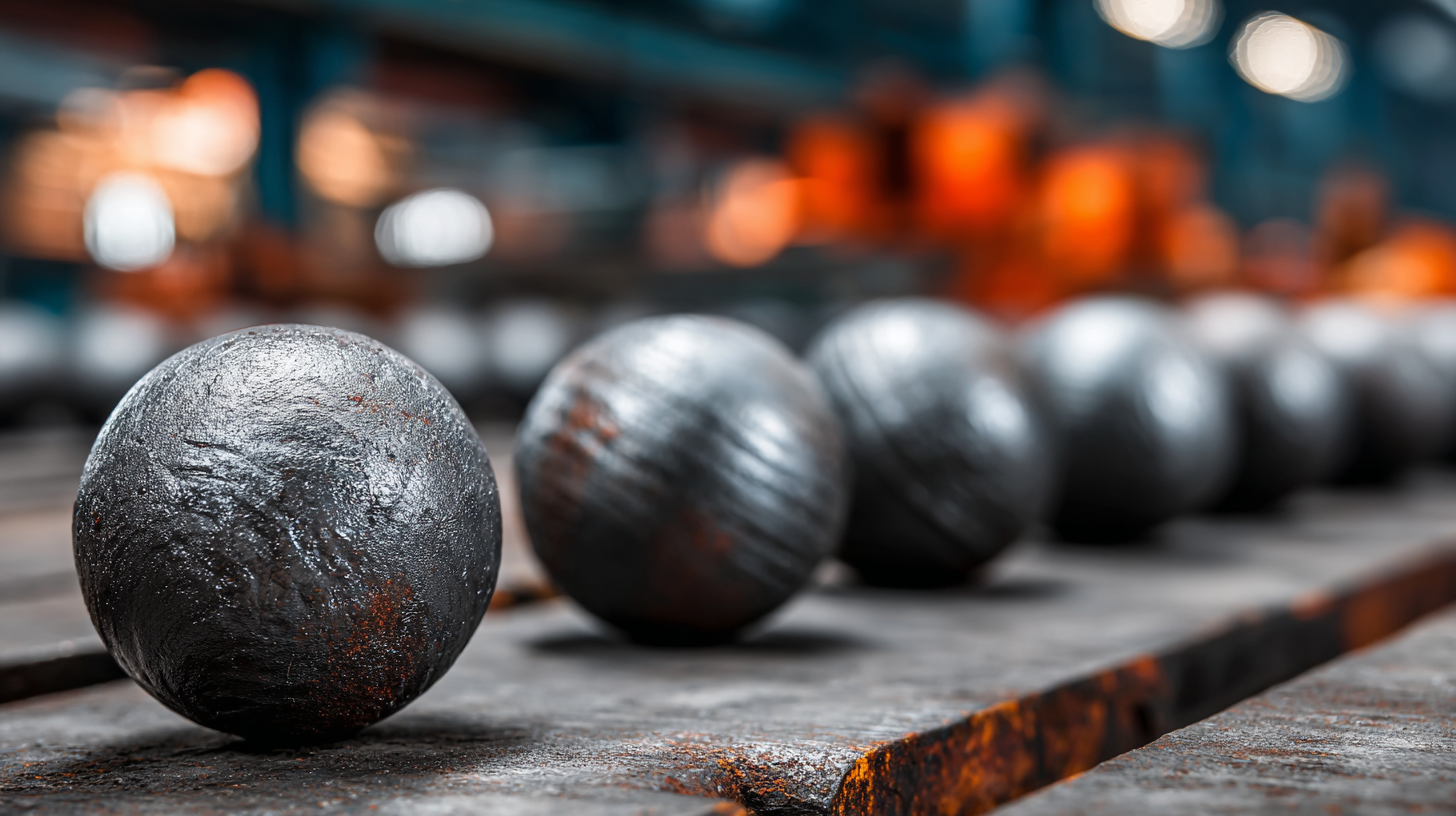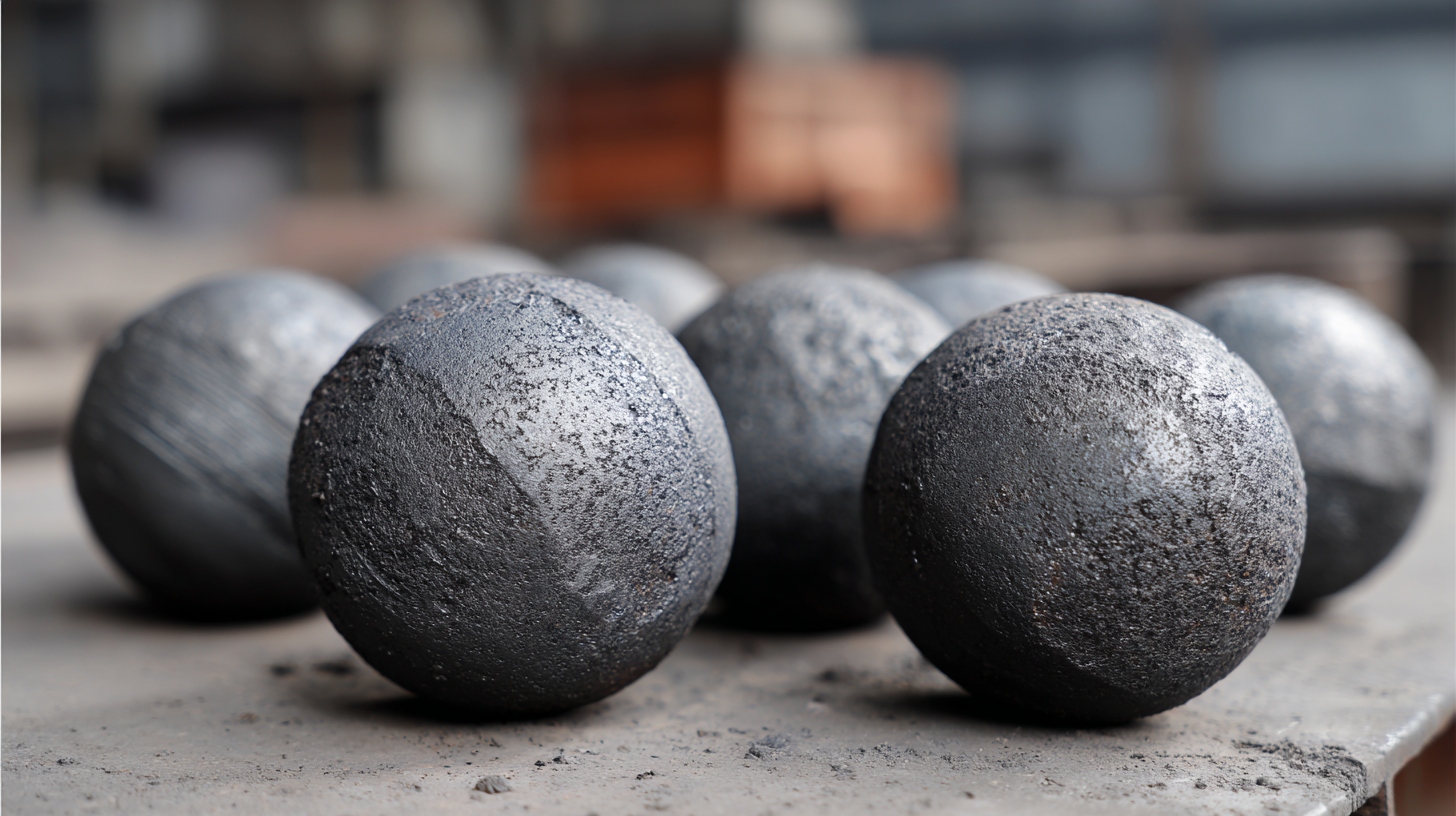
In the evolving landscape of industrial manufacturing, the carbon steel ball industry is poised for significant advancements by 2025. As global consumption of carbon steel balls is projected to exceed 1.5 million tons, with a compound annual growth rate (CAGR) of 5.2%, manufacturers must adapt to changing market demands and technological innovations. Industry reports indicate that sustainability and cost-effectiveness will drive the development of new manufacturing techniques and materials, positioning carbon steel balls as a critical component in various applications, from automotive to aerospace. This blog will explore the latest trends in carbon steel ball manufacturing, offering valuable insights and innovative solutions that cater to global buyers seeking to stay ahead in a competitive market.

As we look towards 2025, the carbon steel ball manufacturing industry is poised for significant transformation driven by emerging technologies. Key advancements such as automation, artificial intelligence, and advanced materials are reshaping the production landscape. These innovations not only enhance efficiency and precision in manufacturing but also lead to the creation of higher-quality products that meet the evolving demands of global markets.
One promising area of development is the integration of smart manufacturing techniques. Utilizing IoT-enabled devices, manufacturers can monitor production processes in real-time, enabling proactive maintenance and minimizing downtime. Additionally, the adoption of advanced coatings and surface treatment technologies is improving the durability and performance of carbon steel balls. By leveraging these advancements, manufacturers can reduce waste and optimize resource usage, contributing to a more sustainable industry model while satisfying the needs of environmentally conscious buyers.
 When evaluating carbon steel ball suppliers, it's essential to consider several key factors that can significantly impact the quality and reliability of the products. First and foremost is the supplier's reputation in the industry. A supplier with a proven track record of delivering high-quality carbon steel balls will likely ensure consistent performance and durability in their products. Researching customer testimonials and seeking references can provide valuable insights into their reliability and customer service.
When evaluating carbon steel ball suppliers, it's essential to consider several key factors that can significantly impact the quality and reliability of the products. First and foremost is the supplier's reputation in the industry. A supplier with a proven track record of delivering high-quality carbon steel balls will likely ensure consistent performance and durability in their products. Researching customer testimonials and seeking references can provide valuable insights into their reliability and customer service.
Additionally, assessing the supplier’s manufacturing process is crucial. Understanding the materials they use and their production techniques can offer a glimpse into the ball's overall quality. Look for suppliers who adhere to international standards and certifications, as these are indicators of a commitment to quality and safety. Furthermore, consider their capacity for innovation; suppliers that invest in new technologies and sustainable practices are better equipped to meet the evolving demands of global markets and can provide innovative solutions that enhance product performance.
Sustainable practices in the production of carbon steel balls are becoming increasingly crucial as the demand for environmentally friendly manufacturing processes rises. According to a recent report by
MarketsandMarkets, the global carbon steel market is projected to reach USD 283.26 billion by 2025, emphasizing the necessity for sustainable solutions in production.
Manufacturers are now focusing on reducing carbon emissions by implementing cleaner energy sources and optimizing production processes. This shift is not only driven by regulatory requirements but also by the growing preference for sustainable products among consumers and businesses alike.
One innovative solution gaining traction is the adoption of electric arc furnaces (EAF) as a primary method for steel production. EAFs utilize up to 40% less energy compared to traditional blast furnaces and can significantly lower carbon emissions, aligning with the International Energy Agency’s roadmap for a sustainable steel industry.
Furthermore, many companies are investing in carbon capture technologies, which can potentially reduce emissions by 90% in the production phase. This commitment to sustainability is becoming a key differentiator for global buyers, ensuring that their suppliers adhere to responsible manufacturing practices while meeting the increasing demand for high-quality carbon steel balls.
The global carbon steel ball market is poised for significant growth, especially with the ceramic ball market projected to escalate from a valuation of $5.817 billion in 2024 to $8.369 billion by 2032. This expansion highlights a robust demand in various sectors, including automotive, machinery, and consumer products, where high-quality, durable components are essential. As manufacturers innovate, the introduction of advanced materials and production techniques will be crucial for meeting evolving buyer demands.

Emerging opportunities for global buyers are surfacing as trends in sustainability and efficiency reshape manufacturing processes. Companies are increasingly focusing on reducing their carbon footprints and adopting eco-friendly practices. This shift not only aligns with global sustainability goals but also attracts environmentally conscious consumers and investors.
Furthermore, technological innovations, such as precision engineering and automation, are expected to enhance product quality and reduce production costs, making carbon steel balls even more competitive in the marketplace.
In the evolving landscape of carbon steel ball manufacturing, enhancing supply chain efficiency has become a top priority for global buyers. Innovative solutions are emerging to address traditional bottlenecks, ensuring a smoother flow of production and delivery processes.
Automation and digitalization are leading the charge, allowing manufacturers to streamline operations, reduce lead times, and improve inventory management. These advancements not only provide a competitive edge but also foster stronger relationships between suppliers and customers.
When optimizing supply chain efficiency, consider these tips:
